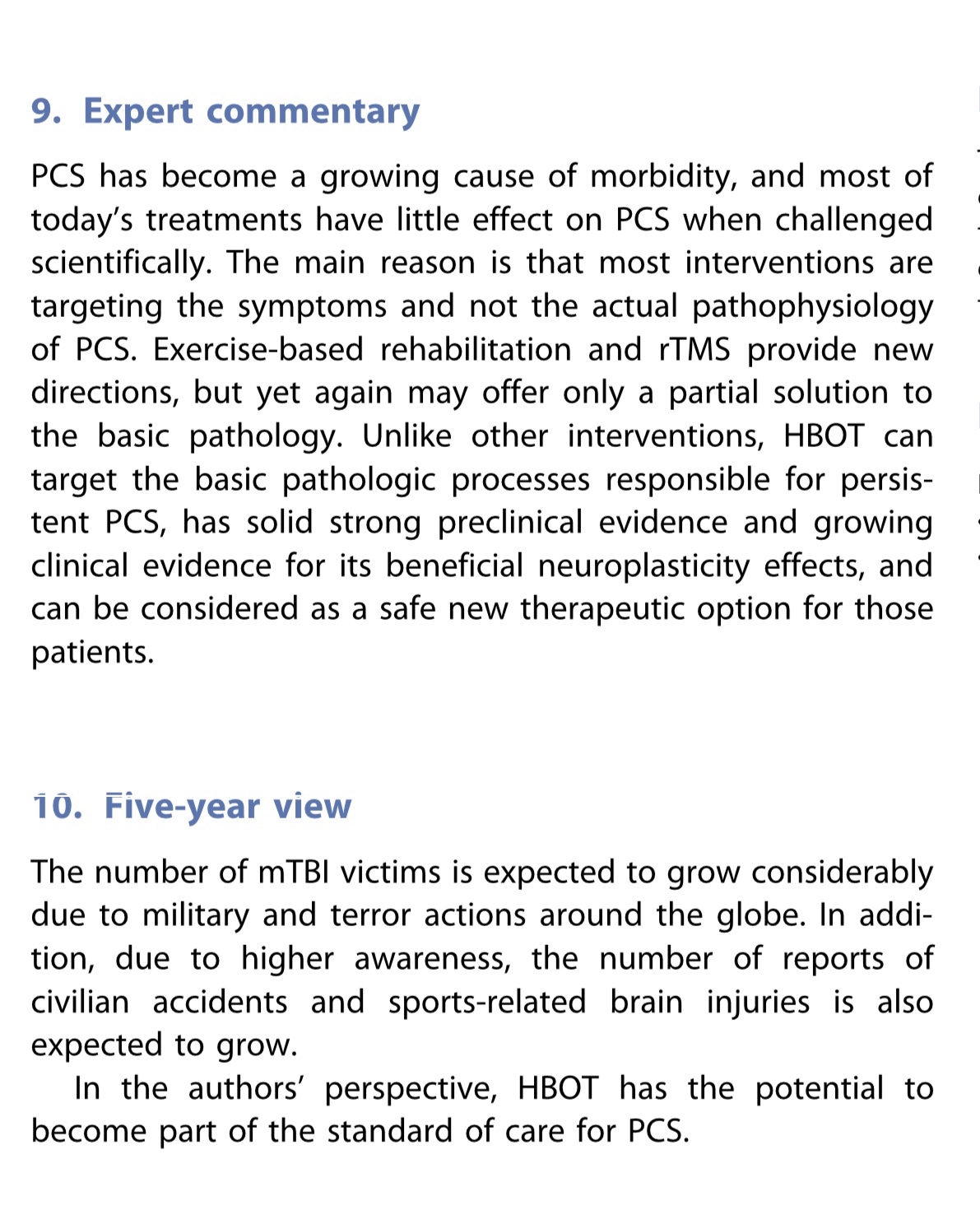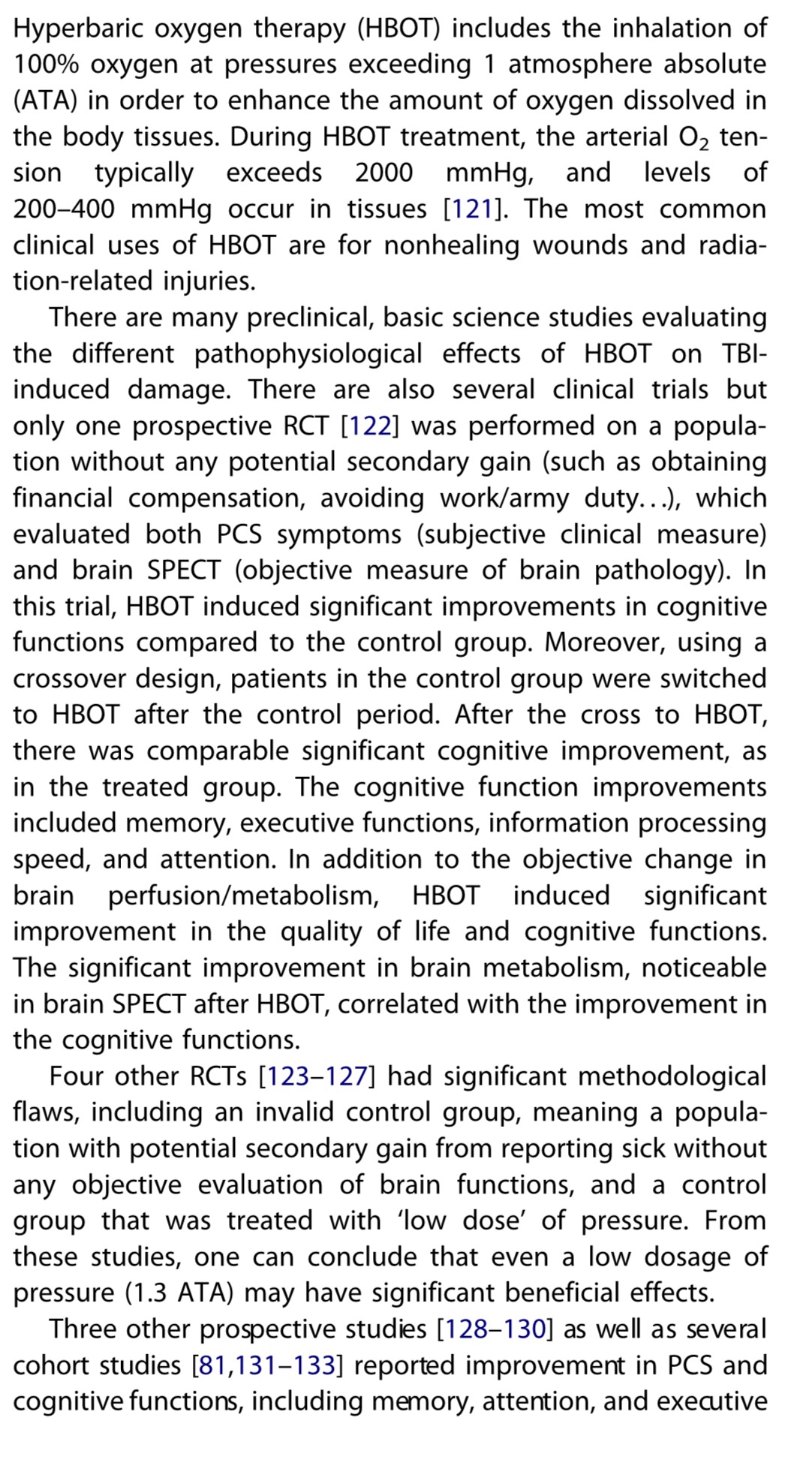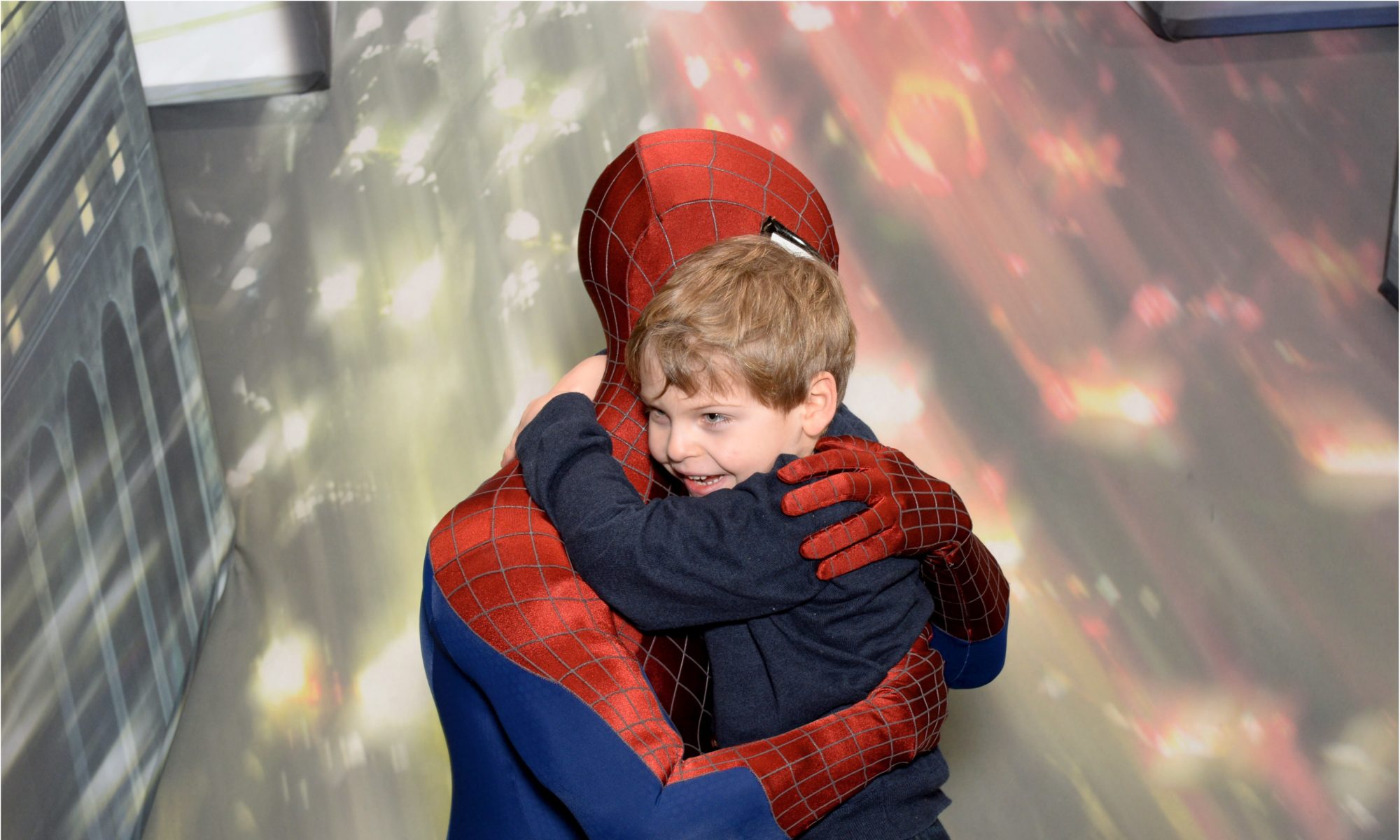Hire what Study from Israel yet in 2016 about hbot and PSC (Persistent post-concussion syndrome caused by mild traumatic brain injury )
I am sure in 2018 they have much more data’s ( because naw they are doing study for children’s):
Results will be published in 2019
So we will talk about results of this trail in 2019 if you wants 😉
( I saw children’s and discussed with parents our last time we was in Israel May 2018…..so at least I know what parents alredy saw…)
It’s the first randoased trail for hbot and concussion in children’s :
https://clinicaltrials.gov/ct2/show/NCT03339037
Persistent post-concussion syndrome caused by mild traumatic brain injury has become a major cause of morbidity and poor quality of life. Unlike the acute care of concussion, there is no consensus for treatment of chronic symptoms. Moreover, most of the pharmacologic and non-pharmacologic treatments have failed to demonstrate significant efficacy on both the clinical symptoms as well as the pathophysiologic cascade responsible for the permanent brain injury. This article reviews the pathophysiology of PCS, the diagnostic tools and criteria, the current available treatments including pharmacotherapy and different cognitive rehabilitation programs, and promising new treatment directions. A most promising new direction is the use of hyperbaric oxygen therapy, which targets the basic pathological processes responsible for post-concussion symptoms; it is discussed here in depth.
(PDF) Treatment of persistent post-concussion syndrome due to mild traumatic brain injury: current status and future directions.
Available from:
[accessed Dec 04 2018].
16 symptoms of PCS on a 0 to 4 scale (King 1995). Thèses 16 symptoms are: headaches, feelings of dizziness, nausea or vomiting, noise sensitivity, sleep disturbance, fatigue, being irritable, feeling depressed or tearful, feeling frustrated or impatient, forgetfulness, poor concentration, taking longer to think, blurred vision, light sensitivity, double vision, and restlessness. Imaging modalities, such as computed tomography (CT) and magnetic resonance imaging (MRI), are useful to detect underlying abnormal findings, such as mild subarachnoid haemorrhage, subdural hematomas, and contusions for mTBI patients (Borg 2004). Other advanced imaging techniques, such as diffusion tensor imaging (DTI) and single photon emission computerised tomography (SPECT), may also be useful to diagnose abnormal findings for PCS patients after mTBI (Agrawal 2005; Khong 2016).
Hyperbaric oxygen therapy (HBOT) has been proposed as a therapy to improve the symptoms of PCS.
Regeneration following damage to the brain after mTBI requires additional energy. HBOT may increase oxygen levels in the blood and body tissues, thus supplying sufficient oxygen for converting the energy through aerobic metabolism into a usable form for cellular function needed for brain repair. The elevated blood oxygen level may have several restorative effects on damaged brain cells, such as increasing blood flow, improving metabolism, triggering neuroplasticity, and activating angiogenesis (Golden 2002; Hadanny 2015; Tal 2015). HBOT may also increase cell proliferation, induce oxidative stress resistance, and may affect changes in gene expression (Godman 2010).






